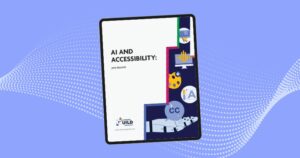Your cart is currently empty!

The Microlearning Trend: Accommodating Cultural and Cognitive Shifts

You hear it all the time: the millennials are hitting theworkforce en masse and they can’t focus, can’t put their phones down, and theyhave “the attention span of goldfish” (quite literally—Dianne Dukette, MD andDavid Cornish, MD, doctors at Kaiser Permanente, claim that the continuoushuman attention span may be as short as eight seconds, while a goldfish seemsto have some of us beat at nine). As digital natives fight these stereotypes,it turns out the observationsmight not be too far off. Attention spans arechanging. It’s just not as generational as we might think.
It seems we’re all moving in this direction, and it’sa cultural and cognitive shift: oldand young alike are consuming more media than ever before. According to Nielsen, older adults age 50 – 64 upped their daily web videoconsumption by 72 percent just in the second quarter of 2013. And far fromanecdotally, if you compare nearly any movie from 30 to 40 years ago to today,you’ll notice whole scenes and individual shots are much longer—even absurdlyso, to our modern tastes—and it’s because the film industry in the 1960s assumedaudiences needed upwards of 20 seconds to recognize and process an image. Idon’t think I have to point out how differently we consume movies today, whereseizure-inducing fly-by micro edits are the norm.
How does this affect learning, and how do eLearningstrategies and techniques need to accommodate these cultural shifts? I’d liketo offer some ideas about these questions, based on current experience andresearch.
The microlearning trend
Microlearning—defined as learningin short, digestible, bite-sized units—is next-gen training for a workforceready to consume it the way it does everything else: fast, small, and “ourway.” Easily accessible via devices such as mobile phones, tablets, and laptopcomputers in formats as varied as videos, blogs, games, quizzes, simulations,podcasts, or slideshows, microlearning solves for dwindling attention spans,just at the time when technology is changing so rapidly that traditionalL&D training methods can’t keep up.
Why? Because old school training is expensive,time-consuming, and simply can’t be produced fast enough to react to aconstantly changing work environment. Digital skills need upgrades every fewmonths, and practically expire every few years: Deloitterecently estimated digital skills have a half-life of just 2.5 years for anygiven role. And becausedespite technology and digital products rapidly proliferating and evolving, thesedevelopments are only able to improve performance with the right training.
In fact, of the more than 200 million adults in the USdigital workforce, only one in ten consider themselves “very proficient” withthe digital tools they use every day. And research conducted by Adobe showsthat 58 percent of employees—despite using a set of productivity tools at work—reportthey’re “not productive.” Perhaps this is why labor productivity growth in theUS business sector has slowed to a level not seen since the 1950s—just onepercent for Q1 2014. All told, according to the International Data Corporation,this is driving a nearly $1.3 trillion bill for the US economy based on compensation.For a firm with 1,000 employees, this translates to a $10 million loss eachyear.
However, despite this endemic financial burden tocompanies, the effects don’t seem to be getting noticed—or addressed. Insteadof formalized training on these technologies from employers, workers often relyon their colleagues for help, further clogging up workplace efficiency. Or,they lean on their friends: my co-founders and I noticed this trend while out fordinner one night four years ago. A text came through on one of our phones—oneof many we’d been receiving lately—from a buddy who wanted advice on how tolink Google Analytics to his WordPress account. Not that we were the experts onthis particular digital task—but it echoed the murmurs of “Hey, do you know howto…” we’d been hearing in every cubicle and around every water cooler in everyoffice where we’d ever worked.
What a concept! Why not let workers train themselves: on their own time,accessible via the internet, with short lessons that don’t interrupt work?
Faster and focused
Thankfully, a few L&D trainers areacknowledging this solution, too: a movement is afoot to try to cuttraining time down, to focus more on online and eLearning, and to deliver itall more efficiently. But yet, when trainers strive for brevity, theiraim has been to consolidate content down to a day instead of a week, or reduceto 90 minutes what used to be a three-hour-long training session. Currently, theAssociation for Talent Development (ATD) estimates the average time spenttraining is still over 30 hours per employee (higher for larger companies), andfor whatever reason that’s actually five hours longer than it was a decade ago. In my view, this is like trying toshoot a fire hose of information through an attention span the width of astraw.
Using microlearning as a guide,shorter is always better and is best delivered in an easy tocomprehend-and-consume format, particularly video. The individual units shouldbe granular, recursive, and organized into chunks or tracks that serve a largerlearning objective, aiming to provide a more holistic and 360° view of a topicthan would otherwise be delivered in a linear, structured course.
But how are, say, 50 one-minute instructional videos able tocover the same material as a week-long training session, you might ask? Becausethey’re not trying to. Microlearning strips training down to its most essentialskills and knowledge—no time for a wind up and wind down, no tolerance for dullregurgitation, no room for fluff.
Benefits of microlearning
This method is ideal for learnersbecause the content is engaging, relevant, and can be consumed at the time ofneed. Even more so, it can be used as performance support, offering access and reviewin the field or as a resource for delivering updates, price changes, oranything else requiring regular augmentation. This facilitates just-in-timelearning (i.e., when a worker needs it, when it’s most relevant to their work,and when they’re the most receptive), perhaps taking advantage of moments thatdon’t normally seem like training opportunities, like waiting for the bus or ona lunch break, or in the case of Google, during true “down time.” (We walk thetalk in my company: “Testing on the toilet” and “learning on the loo” areone-pagers distributed in restrooms throughout our headquarters!)
Not just beneficial for learners,microlearning is also optimal for trainers: the pieces are easy to create,manage, and distribute, and much faster to produce (according to learning architectRay Jimenez, up to 300 percent faster) while costing only half as much. Withthat kind of savings, organizations can afford to spend more on production,creating high-quality, beautiful, and engaging experiences offering up evenmore incentive to learn. And, by organizing content into smaller units ortracks of learning, you can simultaneously service both new and veteranworkers, because they’re able to orient themselves in the ecosystem of thecourse, reviewing or skipping content as needed. If that’s not enough,microlearning is perfect for global training (Think: small chunks are easilytranslated for different cultures).
Best of all, microlearning isproving to be more effective: classroom training often yields few long-termtakeaways (90 percentof new skills are lost within a year, reports the Wall Street Journal) whiletraining company Mind Gym estimates that a microlearning method consistentlyyields four to five learned takeaways per session. Not to mention thatdistributed practice aids in retention: just like in like nutrition orexercise, or when studying for a test—small efforts over time are quantifiablymore beneficial than a single cram session.
Finally, we know microlearning works. At Grovo, though we weren’t the first tonotice the trend, we stumbled upon it in our data nonetheless: when you comparevideo completion rates over video length, there’s a direct and irrefutablecorrelation. The shorter a lesson the more it got watched, and the more likelya viewer was to watch it to its end, while the longer the content the morewidely it was abandoned and ignored.
Applications
Not surprisingly, this is how our brains are already wired,by the way. And it’s how humans have learned and interacted throughoutmillennia (across distances in short, efficient bursts). The rise of micro media(Twitter, Vine, Tumblr, Yammer, etc.) and the emergence of the sharing economy(Uber, Airbnb, GoFundMe, etc.) are now broadening this “micro” trend across theculture, from boomers to Gen Z, aching for more control, a more individualizedexperience, and demanding results with the least amount of effort. The onlydifference now is that learning practitioners are finally catching on tomicrolearning’s value, just at the time when the perfect technologies haveemerged to deliver it.
To successfully adopt a microlearning method of their own,we recommend that a company’s first step is to define the goals of theirvarious departments, and identify the specific skills required to accomplishthem. Based on this inventory, you can develop a program to strengthen thoseskills, but even more crucially, to build one that’s scalable to maintain thoseskills over time. In many organizations, it’d be most prudent to focus effortson a small set of eight essential digital skills we’ve identified tobe most critical:
- Working with documents
- Communication management
- Project collaboration
- Search and research
- Attention management
- Platform flexibility
- Digital etiquette
- The all-important … privacy and security
Payback
But regardless, a well-designed microlearning program willimprove productivity, increase job satisfaction, retain your top talent—andeven more so—repay your training budget in more than bite-size ways.
Alltold, a regimented diet of strict rules and linear learning can over-stufftrainees and leave them feeling bloated and overwhelmed. But by slicingtraining down into its most essential, wholesome, bite-sized chunks—that bestserves a growing population of teaspoon-sized attention spans—I predict thefeast of content you prepare for your audience will be far more appetizing.
References
Cornish, David & DianneDukette. The Essential 20: Twenty Components of an Excellent Health CareTeam. RoseDog Books, 2009.




